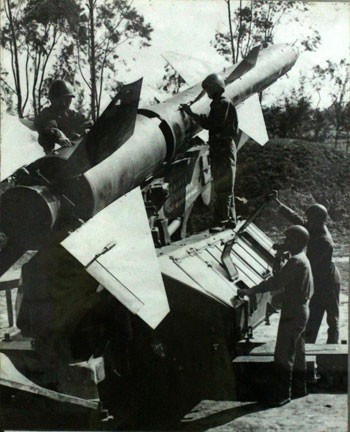(VOVworld) – During the winter days of late December, 1972, Hanoi’s army and people resiliently defeated US B-52 warplanes, making a resounding ‘Dien Bien Phu in the air" victory. Four decades later, the historic event is still not forgotten. The brave sacrifice of Vietnam’s air force soldiers and the endurance of Hanoi’s residents are fresh in the memory of people today.
 |
| 81 US warplanes including 34 B-52s were destroyed during 12 days of the 1972 campaign “Hanoi-Dien Bien Phu in the Air”. (Photo: Hoang Ha) |
Forty years ago, during its final air battle, the US Air Force conducted Operation Linebacker II, the largest bomber strikes launched by the US in the Vietnam War. B-52 strategic heavy bombers, among the most advanced weapons of that time to attack Hanoi, the nerve-centre of Vietnam with the hope of crushing the will of the Vietnamese people and forcing them to accept US conditions at the Paris Peace Talks. Do Hien, a Hanoi resident, recalls: ‘It was a tense and fierce battle between our air defense soldiers and US warplanes which bombarded Hanoi day and night. I witnessed a determined capital and brave air force soldiers using anti-aircraft guns to return fire. We did all we could for our just struggles.’
During 12 days of December, 1972, nobody in Hanoi could sleep. The sky was filled with the roar of B-52s, the explosion of bombs, and the continuous firing of anti-aircraft guns opposing the heavy air raids. The bombing fell on densely – populated zones and outlying areas, destroying Kham Thien Street, Bach Mai Hospital, Hang Co Railway Station, and the districts of Dong Anh, Tu Liem, and Thanh Tri. Do Doan Dai was the Director of Bach Mai Hospital: ‘We will never forget the bombardment during the dawn of December 22. Trees, houses, and the whole hospital were ravaged. In all, 28 people died and 20 others were injured. They bombed us who only did humanitarian work to save sick people. It was a heinous war crime.’
Colonel Nguyen Quang Hung is former Deputy Chief of Staff of the Vietnamese Air-Defense Force ‘In combat, our soldiers were very creative in using weapons and equipment to fully tap their features. Since 1967 we had learned the tactics of target detecting, so in 1972, we were not surprised by the attacks of the B-52s. We participated in this fight confidently and gained success as we applied lessons drawn from the Quang Tri battlefield.’
During the 12 days and nights of the 1972 Campaign “Hanoi-Dien Bien Phu in the Air”, the Vietnamese Air Defence Force, shot down 81 aircrafts, including 34 B52 bombers. The victory of Hanoi’s troops and residents forced the US to sit down at the negotiation table to sign the Paris Agreement in 1973 and pull out of Vietnam. Forty years have passed. Reminders of the operation can be found at the Museum of the Victory over the B-52 Strategic Air Raid, the Museum of Vietnam’s Military History, the monuments in Kham Thien Street, Bach Mai Hospital – and in the memory of older people to remind younger generations about a time when their predecessors lived, fought, and won a legendary victory.